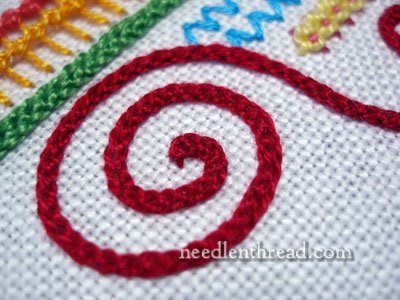March 2, 2013
Hand Embroidery on Eggs – Index
Today, just a quick post to put up an index for Hand Embroidery on Eggs, so that, if you decide you want to try it, you can find these tips all located in the same spot on Needle ‘n Thread.
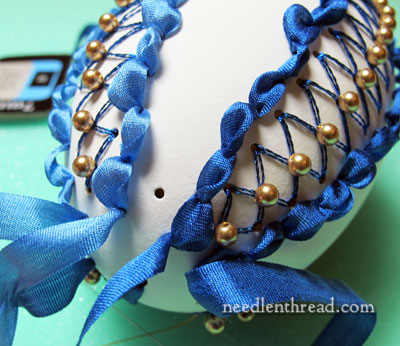
March 2, 2013
Today, just a quick post to put up an index for Hand Embroidery on Eggs, so that, if you decide you want to try it, you can find these tips all located in the same spot on Needle ‘n Thread.

March 1, 2013
Dang! Sometimes, stitching is frustrating!
It’s true! But I figure if everything we did with a needle and thread were easy, if every stitch we took and every project we tackled turned out perfect at the first go, would we really love needlework as much? Would we really love the satisfactory finish as much? Would we really relish the triumph of finishing well something that was challenging?
Probably not. It’d be a lot like living on vacation the rest of your life. Sounds great, but if you never have to work, where’s the fun in a vacation? Where’s the anticipation? Where’s the blissful regret at the conclusion?
I’m saying all this to convince myself, and to console myself over my recent fight with Hungarian braided chain stitch. It was a beautiful brawl! I’m not sure yet who won.
Last week’s Stitch Glitch explored how to start and stop the Hungarian braided chain stitch when switching threads; this week, we’re exploring at how to join a circle invisibly.
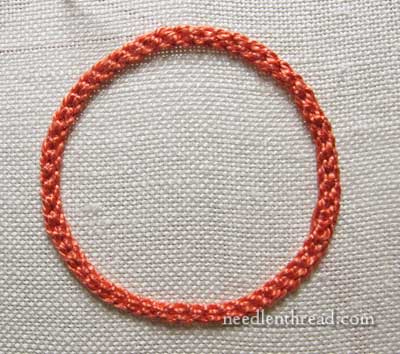
February 28, 2013
“Stash” is something that goes hand in hand with needlework. Even if you’re just starting out with embroidery, you’ll probably find pretty quickly that you can’t get too far away from building at least a wee stash of embroidery supplies, tools, fabrics, and whatnot.
Because embroidery is what I do (I’m very fortunate to be able to say that my hobby is my job), I have an extensive stash. I use my stash for planning embroidery projects for teaching or demonstration and for working up tutorials and follow-along projects for Needle ‘n Thread.
The most important part of my stash is my collection of embroidery threads. Because I live out in the boonies, it’s important to me to have threads I use on hand. I can’t just hop down to a needlework shop or to a craft or hobby shop for even regular embroidery floss. So I have a jolly collection of threads, and the storage and organization of them is an important consideration.
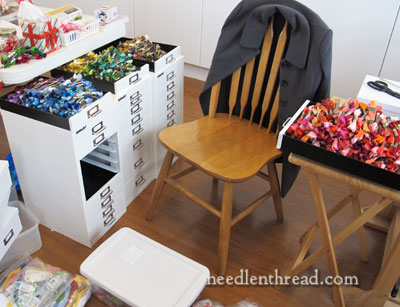
February 27, 2013
The last time we glimpsed inside this piece of old goldwork ecclesiastical embroidery, we looked at one petal of the lily and talked about how it was created. But the lily has more to show us, so we can’t just leave it and move on to the next goldwork element yet!
In fact, though it was interesting to look at one petal, the Really Interesting Stuff about the lily is ahead. When we take the whole lily apart, we’ll see that there’s a lot more to learn about this type of goldwork than simply how the technique is done.
For example, we’ll find out whether or not the same padding and card were used on the whole lily, we’ll find out how the stamens (stitched in bright check purl, or frieze brilliant) were worked on top of the gold, and we’ll discover the order in which the whole flower must have been worked.
So, let’s dig in!
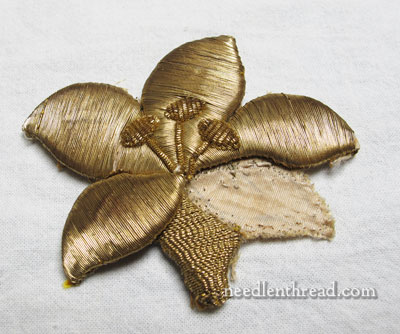
February 26, 2013
Battlement couching is used in hand embroidery as a colorful filling stitch.
Continuing with different lattice stitches in the Stitch Fun series, today we’re going to look at battlement couching and see just how easy it is to do!
I think this is my Favorite laid thread / lattice technique – I love the way it looks when it’s worked with several colors! When it’s just worked with one color, it’s kind of ho-hum, but when you start adding a gradient of color, it’s much more exciting!
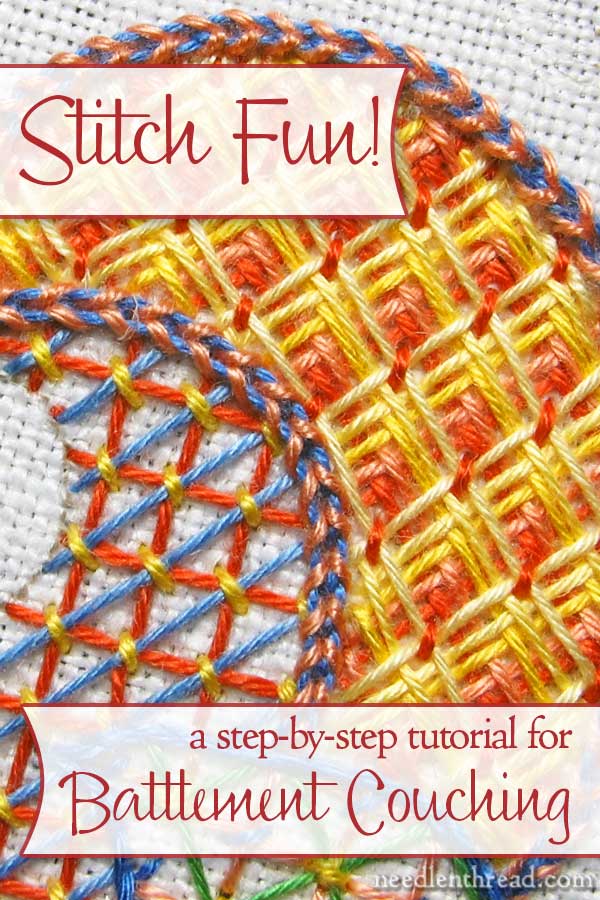
February 25, 2013
Last week, we ventured into the subject of hand embroidering eggs by talking about the preliminary supplies you’ll need to undertake this zany operation.
If you’re keen to put your needle and thread through whole, empty egg shells to create rather unique little Easter ornaments (or ornaments for any time of the year), then you’ll also need a few embroidery supplies, one of which I find essential.
So let’s look at the supplies you’ll want to have on hand to embroidery your eggs. Most of these, you’ll probably have in your stash – in fact, embroidering eggs can be a great stash-busting project! Bits of ribbon and specialty thread that might not otherwise get used can be put to good use embellishing eggs.
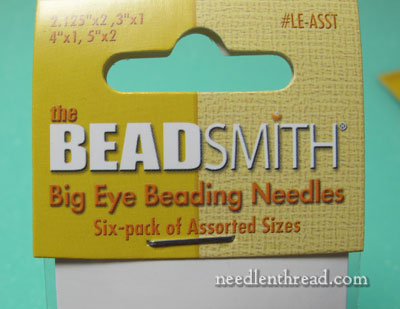
February 23, 2013
“Stitch Glitch” is a little series of articles here on Needle ‘n Thread, where we look closely at certain aspects of particular embroidery stitches that are sometimes difficult to figure out. For example, in past Stitch Glitch articles, we’ve explored how to work isolated French knots (method 1 and method 2), how to invisibly join chain stitch circles, how to take sharp corners or make scallops with stem stitch, how to restart new threads in the middle of a line of Spanish knotted feather stitch, and a few other similar topics.
Most of the topics in Stitch Glitch are reader-generated. Normally, these articles come about because a reader wants to know “How do I…?” and a photo tutorial is generally the most helpful way to answer.
Today’s question was posed over on the Ask & Share forum here on Needle ‘n Thread, and it has to do with Hungarian Braided Chain Stitch.
